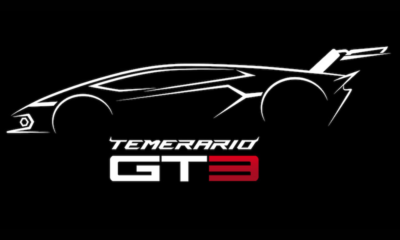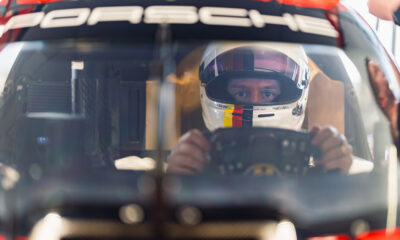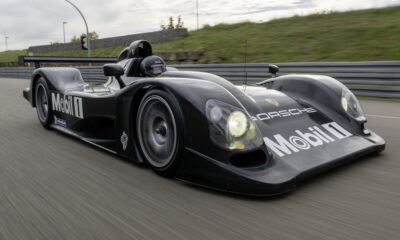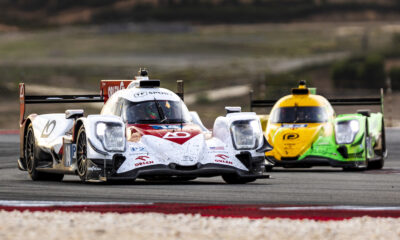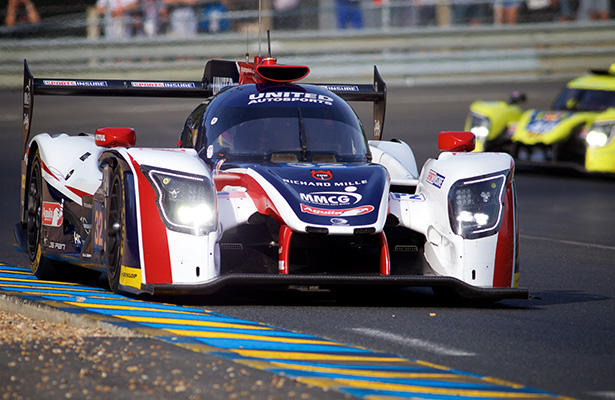
Photo: John Dagys
United Autosports co-owner and managing director Richard Dean believes that a podium finish is still achievable in this weekend’s 24 Hours of Le Mans despite running a Ligier JS P217 chassis in a class that has been dominated by Orecas.
Oreca 07 Gibsons swept the top nine positions in LMP2 qualifying, carrying over the significant pace advantage displayed at the Le Mans test day.
SMP Racing finished as the fastest non-Oreca team with its Dallara P217 Gibson, while United Autosports led Ligier’s charge finishing 15th quickest in class, 3.8 seconds off the fastest time.
Onroak Automotive’s request to switch to an updated low downforce kit outside of its single ‘joker’ permitted once every four years rejected earlier this week as rival chassis manufacturers Oreca, Dallara and Riley failed to offer unanimous support.
“We hoped it would materialize and Ligier did everything that they could. I’m not surprised that it’s not allowed, because we all enter into this with the regulations and homologation process fairly clear,” Dean told Sportscar365.
“If I were Oreca, I would probably have done the same in their position and resisted any upgrade there. We all know where we are and we’ve got to work with what we’ve got.”
Despite the gulf in pace to the Orecas over one lap, Dean believes the gap will shrink in the race, giving the Ligier runners a chance to contend at the front.
“I think it will get closer in race pace but there are some really quick guys out there. When you look on the grid at [Vitaly] Petrov, [Jean-Eric] Vergne and some of these guys, the spread across drivers is quite big,” Dean said.
“Whoever’s in the car at any time, depending on tire condition and everything else, you’re going to see a lot of movement in pace.
“I believe we can keep our pace for long periods and I’m hoping that there’s a weak point and maybe [Oreca] can’t. We’ll see.
“So far, they’ve just done a really good job and it wouldn’t surprise me if they continued to do such a good job in the race. Like all of us, they need some luck.”
When asked if a Ligier podium was possible, Dean said: “Of course it’s possible.”
Lacking an outright pace advantage, the non-Oreca runners are being forced to get creative for the race, with Tockwith Motorsport’s Nigel Moore claiming that a number of the Ligier runners will be using their regular-season high-downforce aero kit.
“We knew we weren’t going to be as quick as the Orecas. They’re pretty much in a league of their own,” Moore told Sportscar365.
“We are running our Le Mans aero kit. I think most of the Ligiers have opted to go for the sprint [high-downforce], but we have a reasonably good straight line speed for it, so in traffic we’re alright and we’re happy around some of the tighter stuff like Porsche Curves.”
While Moore is somewhat hopeful, Algarve Pro Racing team boss Stewart Cox offered a bleaker outlook, having expected to get approval to use the V2 Ligier aero kit that was rejected.
“My issue was we came here very much on the back foot from what was a really productive two-day test in Motorland where we ran the V2 kit,” Cox explained to Sportscar365.
“We were under the impression that it was going to happen because of the issues with the V1, so we tested for two days solely on the V2 car, which was really good.
“We got the news that the V2 kit wasn’t allowed, which was, to say the least, a disaster for us from a Ligier point of view of performance and then we ended up with: ‘Right, OK, now we’ve got to go away and work on the V1.’
“So we went out in the first session and it wasn’t looking too great, so in the second session we went with the sprint kit, but I wasn’t able to get the straight line speed that I wanted.
“So from learning what we learned there, we knew we had to run with the Le Mans kit, and that’s exactly what we’ve done.”
Varying aero kit selections aside, tire management is also set to be key through the race, with the Orecas expected to be harder on their compounds and struggle to make them last four stints, as seen in the European Le Mans Series round at Silverstone in April.
While Cox agreed that the Oreca runners will battle high tire wear, he doubts it will be enough to bridge the gap in pace to the rest of the field for this year at least.
“I think the Oreca is going to be hard on their tires, but at the moment there’s a performance gain where they’re good in the corners and good in a straight line,” Cox said.
“They can afford to just be a bit careful in the corners and let the straight line speed help them, so they can look after their tires, whereas we have to push every lap to get our lap time.
“I think all the Ligier teams have improved with their performance of the car. They’re still a mile off the Oreca at the moment, that’s quite obvious and everyone has accepted that Ligier are.
“They know they have got work to do, and that’s not going to be for this race, that will be for next year, but that’s fine, we’ll bounce back.”
Dean, however, remains more hopeful about United Autosports’ chances, citing the strength of its driver lineup – Filipe Albuquerque, Will Owen and Hugo de Sadeleer – and its overall teamwork.
“We’re really optimistic and I don’t think we’ve shown what we can do yet,” Dean said.
“As an average driver combination, with what we’ve got, we’re gonna move up. We’ve got good teamwork and I’ve been here before without being the in the fastest car, and we’ve come away with a good result.
“I’ve got no doubt this will be a high attrition race, so hopefully we’re not one of those numbers.”
John Dagys & James Newbold contributed to this report



















